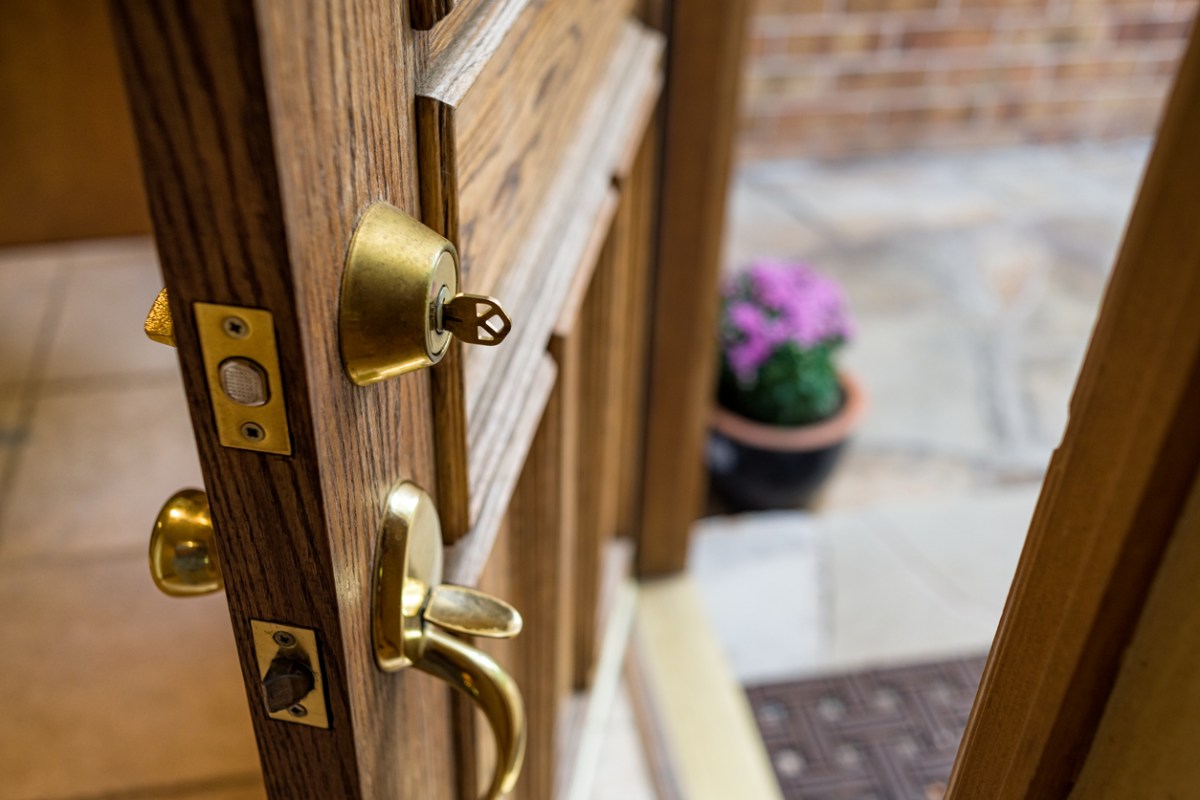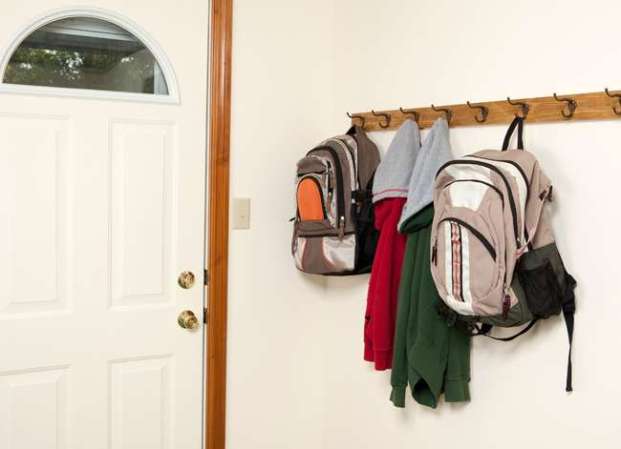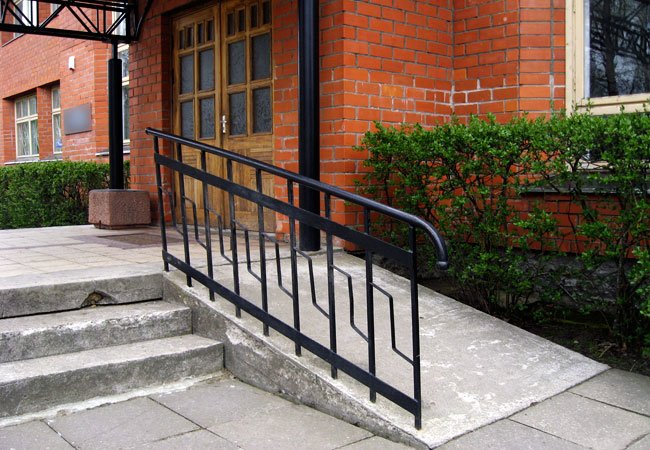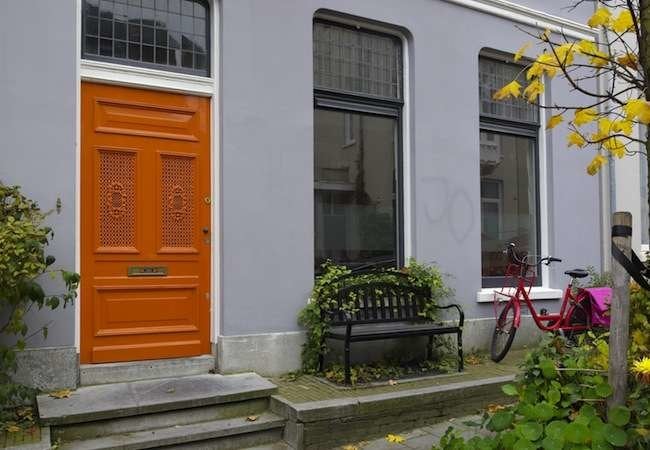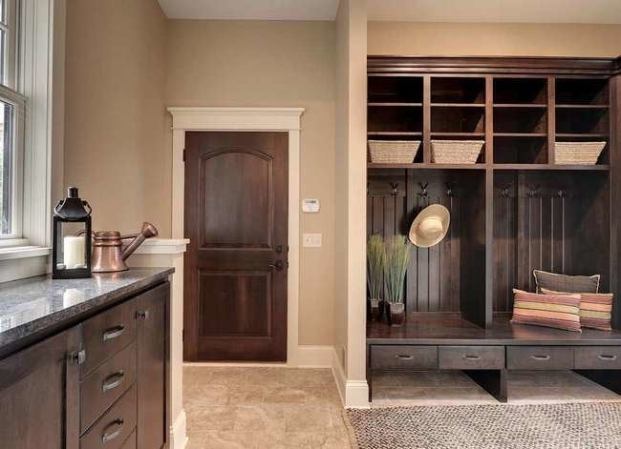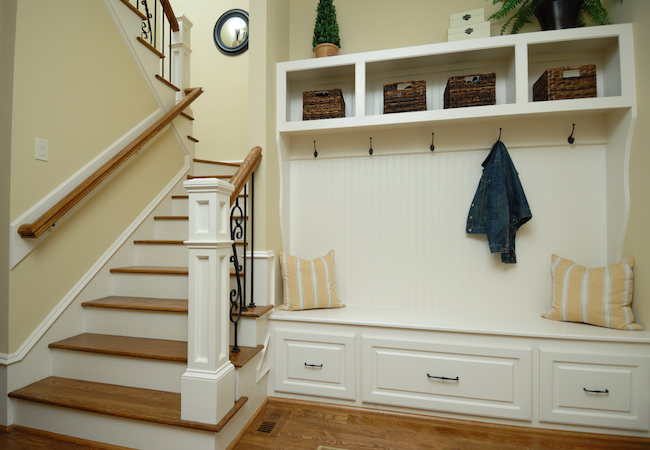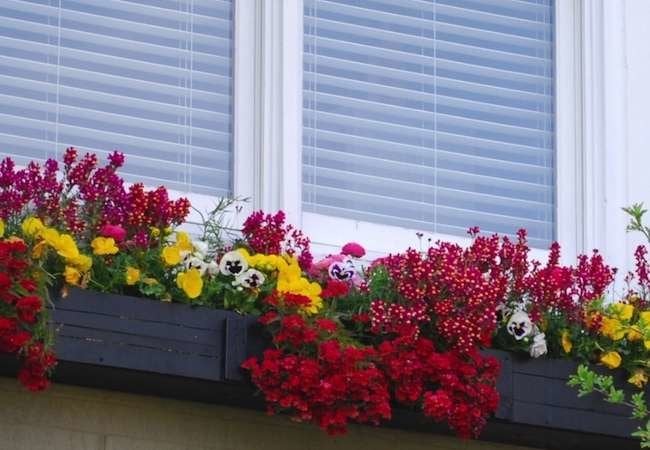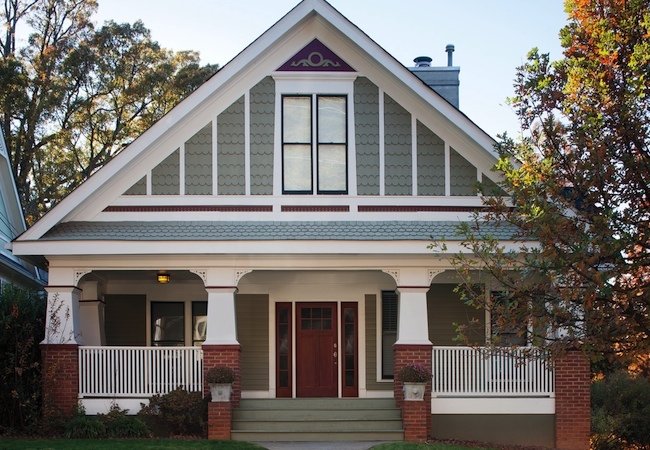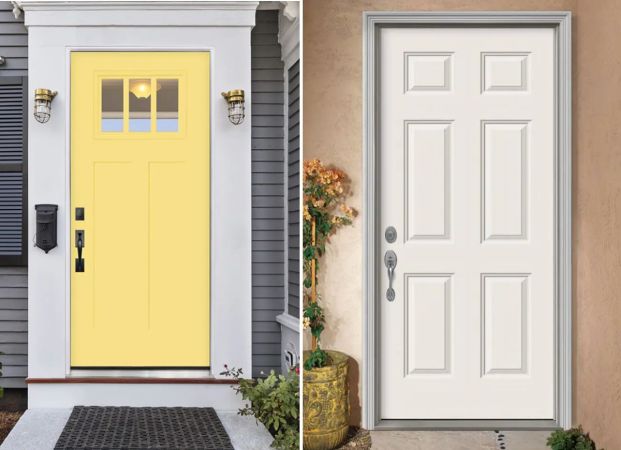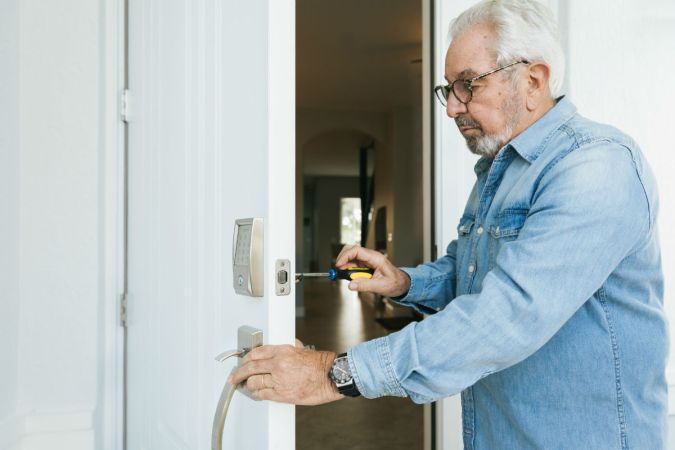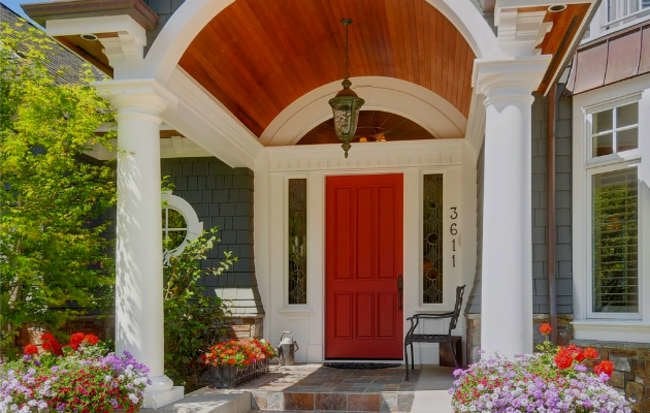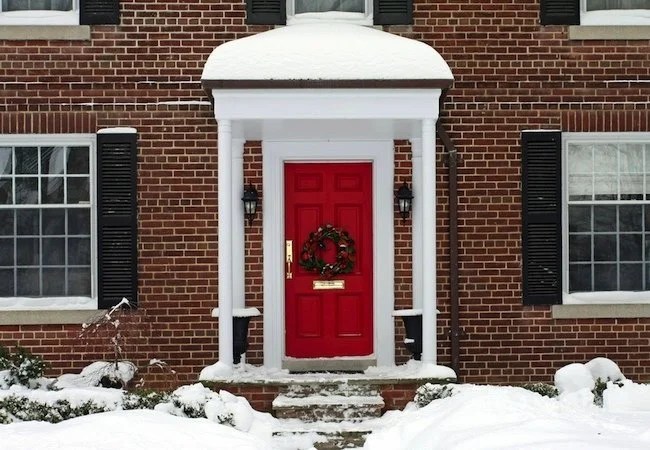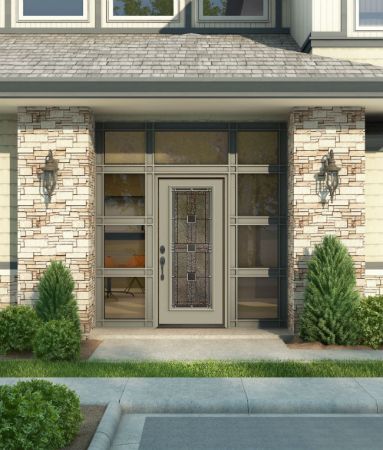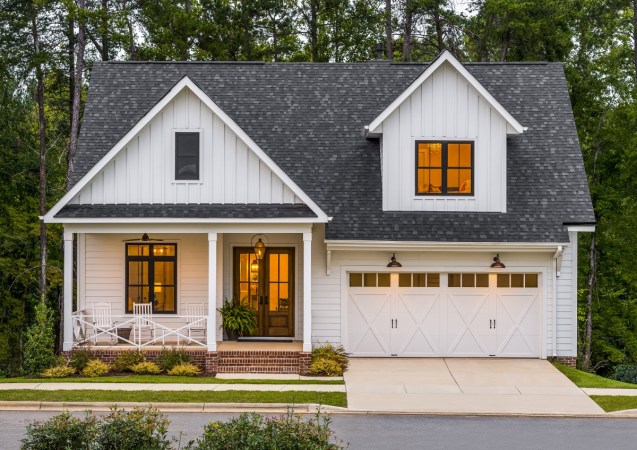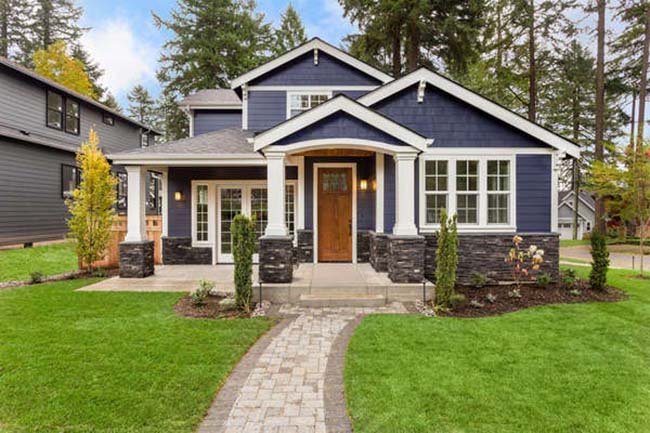We may earn revenue from the products available on this page and participate in affiliate programs. Learn More ›
Almost no other part of your home gets as much exposure as the front door. It’s where you greet friends and family, serve (or scare) trick-or-treaters, and enjoy the songs 0f holiday carolers. A front door says a lot about who lives inside.
There is a dizzying variety of options to choose from in front doors, both in style (paneled, double, arched) and construction (wood, fiberglass, metal). Selecting an entryway can be completely overwhelming, but fortunately there are some practical matters to help guide the decision-making process.
Style
Your front door should fit in architecturally with the rest of your home. But you can take the opportunity to let this element say something about you, as well. Are you the traditional type? Maybe the classic six-panel door is right for you. More whimsical? Perhaps an arched door with stained glass. There is something out there for everyone, so feel free to express yourself.
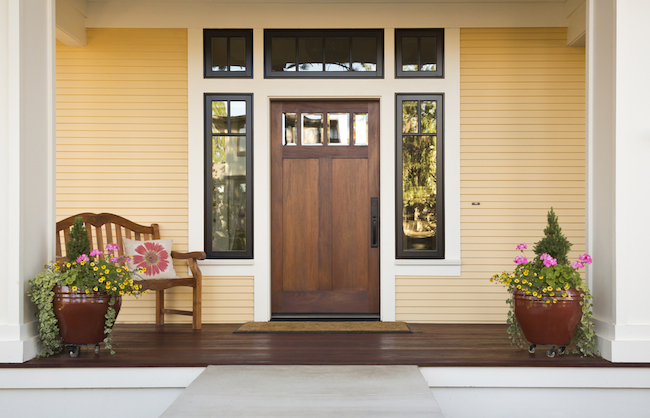
Size
The standard size for a single door is generally 32″-36″ wide. Is your entryway standard, or will it require something bigger, like a 42″ extra-wide single door? Beyond that are double doors. Also, an entryway may encompass more than just the actual door, and remember that ornamental elements (e.g., sidelites or a glazed transom) require proper framing for support.
Material
Most modern doors are made of wood, fiberglass, or steel.
- Wood: Nothing beats the natural beauty of wood, but it doesn’t come cheap—or easily. Because wood is sensitive to moisture and sun, its condition should be examined at least once per year. Modern wood doors are generally a sandwich of veneers over a wood or steel core (to lower cost and minimize warping).
- Fiberglass: Fiberglass composite doors are both affordable and durable. They can go years without needing touch-ups, so they are particularly well-suited for harsh climates. Generally, fiberglass doors they have a foam core—an excellent insulator.
- Steel: Steel is strong and won’t crack or warp, but it can dent. Minor damage can be fixed with auto-body repair kits, but big dents may require replacement. Depending on the core, a steel door can have great energy efficiency. But steel does conduct temperature, so its performance won’t be optimal in extreme climates. Steel is one of the least expensive options, but there is a trade-off in shorter lifespan.
Cost
Like most investments in your home, when you purchase a front door, there’s an up-front cost and the long-term cost. Make sure you are well aware of the energy efficiency, maintenance requirements, and life expectancy of the door you are selecting. All those things impact the long-term cost of maintaining your entryway.
Whatever door you choose, use color, hardware, and entryway accessories to make it your own. Then invite your friends, family, and neighbors to knock and come on in.
Looking for inspiration? Front door ideas abound in our gallery 10 Eye-Catching Options for Your Front Door!
